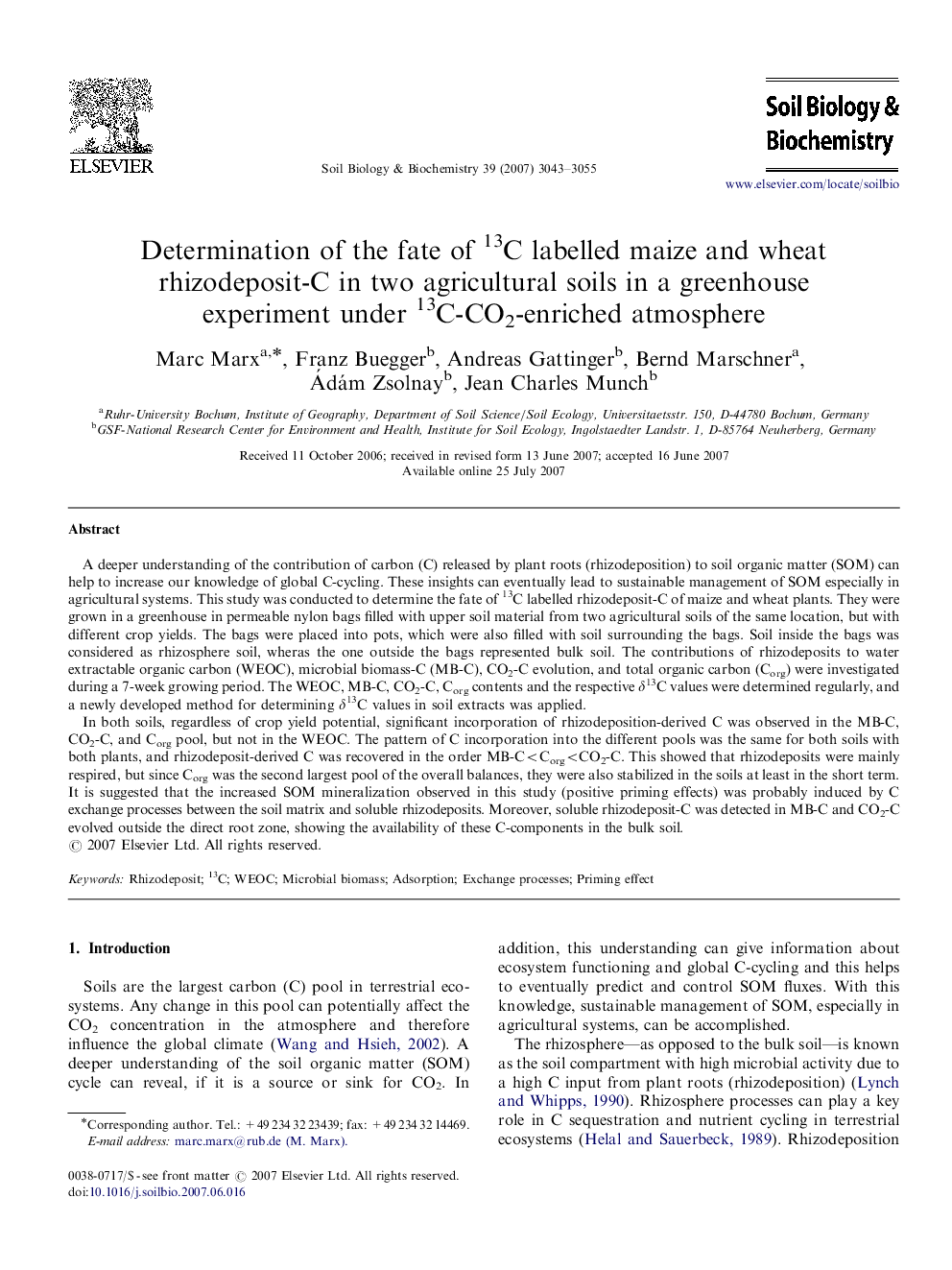| Article ID | Journal | Published Year | Pages | File Type |
|---|---|---|---|---|
| 2025545 | Soil Biology and Biochemistry | 2007 | 13 Pages |
A deeper understanding of the contribution of carbon (C) released by plant roots (rhizodeposition) to soil organic matter (SOM) can help to increase our knowledge of global C-cycling. These insights can eventually lead to sustainable management of SOM especially in agricultural systems. This study was conducted to determine the fate of 13C labelled rhizodeposit-C of maize and wheat plants. They were grown in a greenhouse in permeable nylon bags filled with upper soil material from two agricultural soils of the same location, but with different crop yields. The bags were placed into pots, which were also filled with soil surrounding the bags. Soil inside the bags was considered as rhizosphere soil, wheras the one outside the bags represented bulk soil. The contributions of rhizodeposits to water extractable organic carbon (WEOC), microbial biomass-C (MB-C), CO2-C evolution, and total organic carbon (Corg) were investigated during a 7-week growing period. The WEOC, MB-C, CO2-C, Corg contents and the respective δ13C values were determined regularly, and a newly developed method for determining δ13C values in soil extracts was applied.In both soils, regardless of crop yield potential, significant incorporation of rhizodeposition-derived C was observed in the MB-C, CO2-C, and Corg pool, but not in the WEOC. The pattern of C incorporation into the different pools was the same for both soils with both plants, and rhizodeposit-derived C was recovered in the order MB-C
